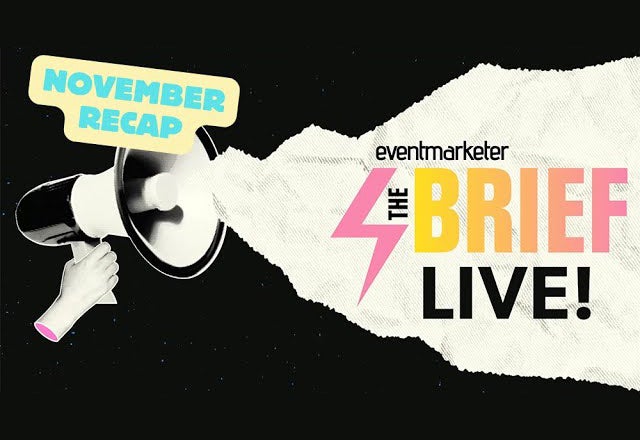PERHAPS YOU’VE been there…
You’ve investigated database marketing systems, developed opinions on databases vs. data warehouses and in-house solutions vs. outsourcing, and evaluated campaign management features. You’ve determined costs. You’re now at that crucial moment of presenting your arguments in favor of a new system to senior management.
“IF we were running 30 campaigns a year, at $800,000 per campaign, and IF we reduced undeliverables by 2%, and IF we improved response by .47% through better targeting, and IF we increased tracking/source code capture by 20%, THEN the system will ‘pay for itself’ in two years.
“IF we shifted 30% of our marketing budget to direct mail campaigns, and IF we changed creative agencies, and IF we were able to loosen our pre-approved selection criteria, and IF we improved our list-selection process, and IF we increase our average retention rate by 15%, THEN the system will ‘pay for itself’ in 1.6 years.
“IF we replace our circulation manager…IF we spend more on envelopes…IF we change our inbound telemarketing center…IF we go four-color…IF we retain a professional list broker…IF we hire two marketing analysts…IF we expand our product/service mix…IF I get a window office…THEN the system will ‘pay for itself’ in a matter of months.”
We often have a difficult time building a business case and justifying costs for a new marketing system. It’s not like a new operational system that can create X more widgets per hour, or reduce downtime by Y%, or be clearly measured in dollars and cents.
So we often support our business case for a marketing system with business-case scenarios and justification of other aspects of our marketing process (anything from changes in resources and vendors to increases in budgets).
We then bundle these various improvements together in the hope that they will be perceived as being part of the same package.
While these proposed upgrades could have a definite impact on your marketing results, they often fail to address why you need a new system.
Some Tips Here are a few suggestions to move you successfully beyond that approval meeting with senior management.
* Qualify your effort. Before you approach senior management with your projections, make sure you actually need and can benefit from a new marketing system. Do your business economics, marketing environment and organizational characteristics support it? If not, are you able to change or remove any or all of the roadblocks? Is your organization and operational group willing and able to capture and support customer information? What are the critical ingredients for success? How many factors do you have working in your favor vs. those working against you? It’s OK to fight an uphill battle as long as you first understand the size and scope of the climb, and some of the obstacles along the way.
* Identify other necessary components, and build a business case for them as well. If you need, say, an increase in budget or a tracking capability to effectively use your marketing system, create separate business cases for these components. Don’t include them in the case for the marketing system, but do make it known there are other pieces of the puzzle that also need to be in place.
If you wait until your marketing system is approved to make mention of the other needs, the entire effort may be called into question. If these other elements are not fully approved, your new marketing system will be forced to stand by itself…and it could then live a very short life.
* Estimate marketing results and improvements in a context that reflects your business setting. You can make these projections-as long as you remain within the bounds of your current marketing environment. Rather than estimating results based on a bigger budget, more resources or other internal improvements, assume instead that the rest of your world will remain the same.
* Gather case studies and success stories, particularly from your own industry, and on companies that operate with similar business models. Do not collect case studies that aren’t related to your situation, as these often do more harm than good. If your company is not committed to a direct marketing/direct sales model, don’t tout L.L. Bean’s success as a cataloger. Rather, look for others that gain benefit from a marketing system while retaining their existing channels.
Relevant case studies alone, and the related perception that “everyone is doing it” may be able to help close the sale.
* Prototype. If marketing databases and/or database marketing are new concepts for your company, you may choose or be forced to prototype. This isn’t necessarily a bad thing, as it can often strengthen your longer-term solution.
Prove It If in the short term you can come up with an inexpensive way to maintain a subset of your data or address one of your secondary needs, your focus can be on proving that new strategy’s value. And it’s typically easier to prove the value of a low-cost, low-frills option than to justify one that includes all the bells and whistles. I can prove the value of owning an automobile that simply runs far more easily than I can devise a good reason to own a new sports car.
I’ve worked with several clients in industries ranging from energy to real estate to build these prototype environments. Experience suggests that:
* Short-term results often can turn the opposition around quite quickly.
* What you learn from these systems tends to strengthen the data, process and functionality of a longer-term solution.
* Advanced features and functions often are not necessary. Clients sometimes discover that keeping things simple is in their best interest.
Building a business case to justify a marketing system based on cost can be just as difficult as cost-justifying other business resources, and even tougher than cost-justifying operational systems.
Yet it’s often essential if you’re hoping to have your system approved.



